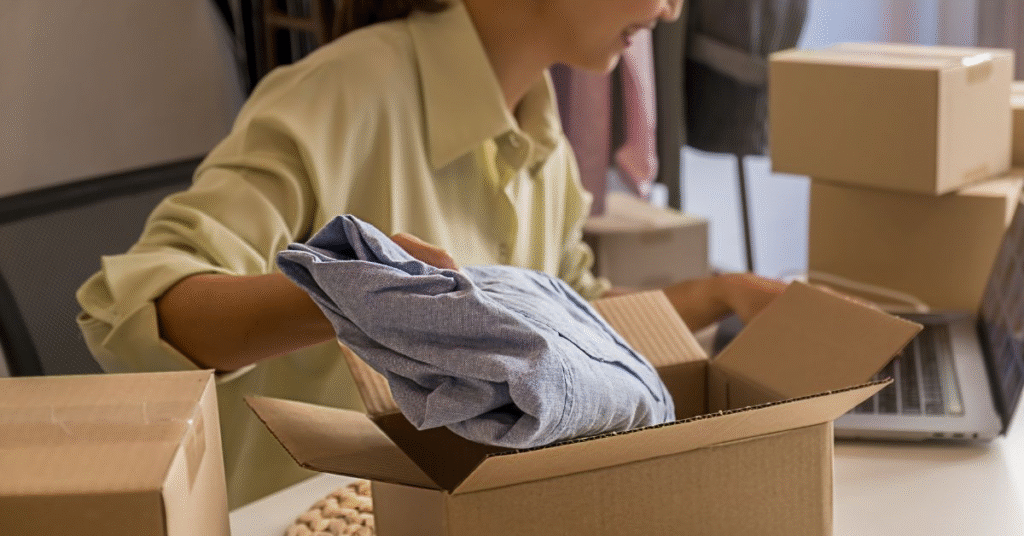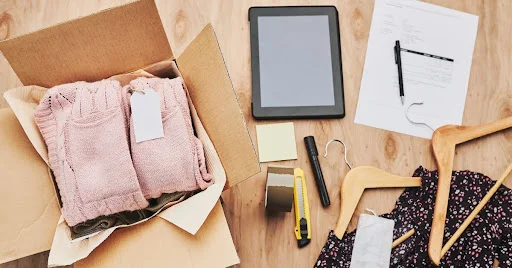In the competitive world of fashion, the customer experience doesn’t end at the checkout. It extends all the way to the moment a package arrives at their doorstep. The unboxing experience has become a powerful marketing tool, a tangible representation of your brand’s identity and a crucial touchpoint that can turn a one-time buyer into a loyal advocate. For this reason, sourcing high-quality custom clothing boxes is no longer a luxury for apparel brands; it’s an essential strategic investment.
Navigating the world of custom packaging, however, can feel like a daunting task. From choosing the right materials and finishes to finding a reliable supplier, the process is filled with decisions that will impact your budget, your brand perception, and your operational efficiency. This guide is designed to demystify the process, providing a clear, step-by-step roadmap to help you source the perfect packaging that not only protects your products but also elevates your brand.
Dive deeper into topics you care about with our expertly curated related posts!
1. Define Your Brand’s Packaging Identity
Before you even think about box dimensions or materials, you need to define what you want your packaging to say about your brand. Is your brand minimalist and modern, luxurious and high-end, or fun and eco-conscious? Your box is a blank canvas that should tell your brand’s story. Consider your target audience: a younger, trend-focused customer might appreciate bold graphics and a vibrant unboxing experience, while a customer buying premium apparel will expect a more understated, elegant design.
2. Choose the Right Box Style and Material
The style and material of your box are the foundation of its look and feel. For e-commerce brands shipping directly to customers, a durable mailer box made from corrugated cardboard is the most popular choice as it offers excellent protection. For a more premium, gift-like experience, a two-piece rigid box is a fantastic option. When you work with a specialized supplier, you can explore a wide range of options; for example, a company like Custom Printed Box can provide everything from simple tuck-end boxes to high-end, custom-engineered solutions to fit your specific needs.

3. Determine the Perfect Size and Dimensions
One of the biggest mistakes a brand can make is using a one-size-fits-all approach to their packaging. A t-shirt rattling around in a box designed for a winter coat not only looks unprofessional but also increases your shipping costs. Carefully measure your core products and create a few standard box sizes to accommodate your range. Right-sizing your packaging not only reduces waste and your carbon footprint but also ensures your products arrive securely and present beautifully.
4. Design Your Artwork and Branding Elements
This is where your brand’s visual identity comes to life. Your design should be clean, professional, and instantly recognizable. Key elements to consider include your logo placement, your brand’s color palette, and any taglines or social media handles you want to include. Don’t forget the inside of the box! Printing a pattern, a thank you message, or your brand story on the interior can create a delightful and memorable unboxing experience.
5. Research and Vet Potential Suppliers
Finding the right manufacturing partner is crucial. Start by searching for custom packaging suppliers online, looking at their portfolios, and reading customer reviews. Key factors to consider when vetting potential suppliers include their Minimum Order Quantity (MOQ), their stated turnaround times, and their printing capabilities. A good supplier will be transparent about their process and happy to answer all of your questions.
6. The Importance of Requesting a Sample
This is a non-negotiable step in the sourcing process. You should never place a bulk order without first getting a physical sample of your custom box. A sample allows you to assess the print quality, the accuracy of the colors, the sturdiness of the material, and the overall construction of the box. It’s your final chance to make any necessary adjustments before committing to a full production run.
7. Understand the Quoting Process
The price of your custom boxes will depend on several factors. The most significant is the order quantity—the price per unit will almost always decrease as your order volume increases. Other factors that will influence the cost include the type of material you choose, the number of colors in your design, and any special finishes you add. When you request a quote, make sure it is all-inclusive and there are no hidden fees for things like printing plates or setup.
8. Navigate Special Finishes and Add-Ons
Special finishes are what can take your packaging from standard to stunning. A matte lamination offers a sophisticated, modern feel, while a gloss lamination makes colors pop. Other popular options include spot UV (a glossy coating applied to specific areas of your design), embossing (a raised effect), and foil stamping (a metallic finish). These add-ons will increase the cost but can significantly elevate the perceived value of your product.
9. Place Your Order and Approve the Proof
Once you have chosen your supplier and are happy with your sample, it’s time to place your order. You will need to submit your final, high-resolution artwork files (usually in a vector format like .AI or .EPS). Before your order goes into production, the supplier will send you a final digital proof for your approval. Check this proof with extreme care, as it is your last opportunity to catch any typos or design errors.
10. Plan for Shipping and Logistics
Finally, you need to consider how your boxes will get to you. Most suppliers will ship your boxes flat-packed to save on space and cost. Be sure to factor in the shipping time to your overall timeline, especially if you are working towards a specific product launch date. You should also ensure you have adequate, dry storage space to keep your boxes in perfect condition until they are ready to be used.
In conclusion, sourcing custom packaging is a detailed but incredibly rewarding process. By taking a thoughtful, step-by-step approach, you can create a box that not only protects your products but also acts as a powerful ambassador for your brand. It is a strategic investment that enhances your customer experience, builds brand loyalty, and sets you apart in a crowded marketplace.
Don’t miss our top picks! Check out the featured post everyone is talking about today.






